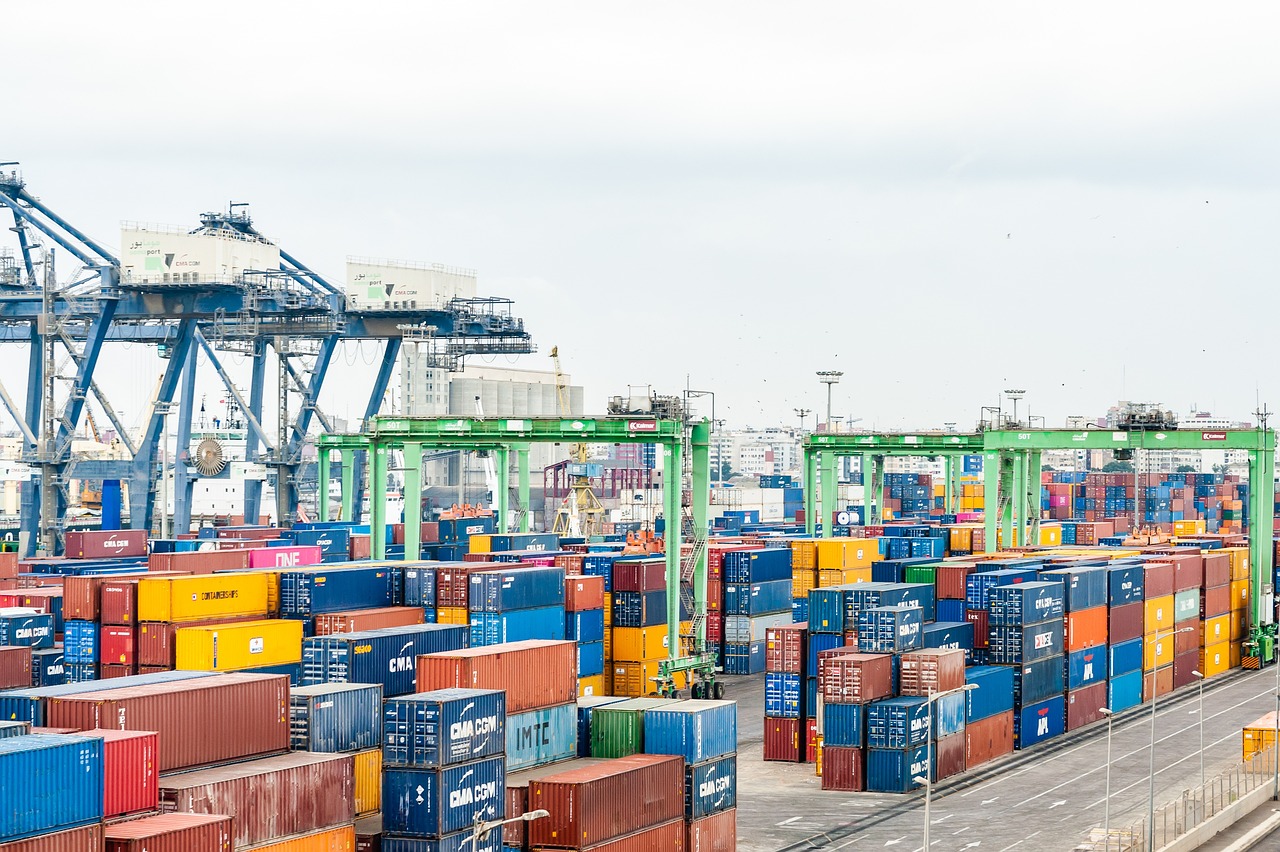All business owners dream of their business flourishing. However, with more orders piling up including international ones, you need to start worrying about shipping your packages abroad past stringent customs and regulations.
Although you may not be responsible for any damage to the cargo during transport, your business will take the hit for any adverse review by dissatisfied customers. Hence you need to have a set of packaging guidelines to follow to ship your products safely.
Fret not for we have compiled the best tips to ensure the prompt and secure delivery of your products, internationally.
1. Undertake Proper Training
Handling and shipping of dangerous goods by any method of transport falls under the Transportation of Dangerous Goods (TDG) Act and Regulations. This defines the declaration of dangerous goods, documents required for the process as well as safety protocols, and training required for handlers who come in contact with the goods.
As a manufacturer or distributor, it is your responsibility to ensure that all handlers are up to date on training and are certified by undergoing on-the-job training. There are dedicated courses available for TDG training that are valid for 3 years after which workers need to be retrained. On the other hand, any uncertified handler is required to be supervised by one who is certified during the handling process.
Furthermore, it is also important to be aware of local as well as government regulations and follow them accordingly otherwise you risk incurring hefty fines.
2. Classify the Dangerous Goods Correctly
The first step in shipping dangerous substances is to classify them according to the type of hazard they pose. This is because each of these classes of goods has differences in their method of storage and transport which is essential to ensure safety during shipping.
Dangerous goods are broadly divided into nine classes with multiple sub-divisions. You will need to classify your goods correctly and keep a “proof of classification” which includes the technical name, class, and date of the classification for a minimum of 5 years after shipping. Here is an outline of the different classes of goods that need to be declared by the shipping company.
- Class 1: Explosives
- Class 2: Gasses
- Class 3: Flammable Liquids
- Class 4: Flammable Solids; Substances that can combust or emit flammable gasses in contact with water.
- Class 5: Oxidizing Substances and Organic Peroxides
- Class 6: Toxic and Infectious Substances
- Class 7: Radioactive Materials
- Class 8: Corrosives
- Class 9: Miscellaneous Products, Substances or Organisms (including environmentally hazardous substances)
3. Contact Your Shipper Beforehand
Requirements and regulations vary between different shipping companies in addition to the TDG guidelines hence it is important to communicate with your shipper beforehand. You need to be absolutely sure that your goods are transported with all specifications to avoid fines or even being held at customs.
4. Make Sure Your Shipment is Packaged and Labeled Properly
This is the most critical step before your shipment leaves your warehouse. As mentioned previously, be sure to look up and check that your goods are packed and labeled specifically to the class of goods you are shipping.
In most cases, corrugated cardboard boxes that are in good condition work best to transport your wares. Avoid used boxes as they are more prone to be opened or damaged. On the other hand, in the case of small flexible items, you can forgo the boxes in favor of mailing envelopes or bubble mailers. Not only are these lighter and cheaper but also require no additional packaging tape owing to their peel-and-seal fasteners.
Finally, pay attention to the package size. Small packages are likely to get dents or bumps whereas very large ones may be stopped at customs and increase shipping costs. The ideal package is large enough to fit in cushioning materials in addition to your goods.
5. Pick The Best Delivery Service
Too often manufacturers focus on the packaging and labeling and ignore the inside. Fill in the gap in your box with bubble wrap, corrugated wrap, old newspaper, or even clothes, especially for fragile goods like electronics.
For the flexible, lighter items like fillers like confetti or paper shreds can be used and in some cases, you can skip the fillers entirely. Remember to shake your package afterward to ensure that it is secure then seal and dispatch.
6. Pick The Best Delivery Service
This is an integral part of the transport process. No matter how much effort you put into the packaging or how perfect all the papers were, all the effort will be for naught if they become damaged on the way.
Choose a delivery service that will transport your goods with care and professionalism ensuring that the goods arrive on time. In the case of overseas shipping, check whether products will be insured, the safety procedures in practice, and the availability of special services for fragile products.
7. Have Your Packages Insured
Accidents are unplanned events but being prepared for one should be planned. Insuring your packages is important if you want to avoid sizable financial losses from any damage during transport.
If you sell expensive or high-value goods, it is wise to cast a financial safety net and receive compensation for damaged goods.
8. Employ Proper Documentation
This is a smart move both for safety purposes as well as for claiming insurance or avoiding legal issues. Note down the condition of your good before you pack them in addition to receiving information. You should also sign on the shipment papers for verification and keep documented proof of all transactions.
9. Establish Good Communication
Communication builds trust and maintains quality control. Regular updates about their package and shipping as well as any delays will assure your customers. This also encourages the courier to exercise caution when delivering packages.
In the event of a full warehouse, it is ideal that you email or call the customer regarding the issue. Customers appreciate when they are made aware of delays instead of being unsure about delivery dates.
Good communication and transparency with your customers result in customer retention.
10. Palletize Your Goods
Another packing advice when shipping goods is to palletize them. This involves the packages being strapped together on a pallet and transported by a pallet jack, saving both time and money while ensuring safety.
However, be sure to look up EU regulations regarding transport by treated woodwork to prevent disease transmission.
11. Extra Strong Strapping
If you want to avoid tampering with your packages then investing in extra strapping and packing tape is a good idea. You can also get custom packing tape which doubles as a marketing tool and provides extra branding opportunities.
12. Clean Your Items Thoroughly
Always check your goods for dampness which can quickly lead to rot and damage surrounding items. If your goods are made of wood, ensure that they are cleaned thoroughly otherwise there may be a risk of rot infestation.
Furthermore, you should label and declare dangerous goods as such to prevent being stopped or fined at customs.
13. Check Weight Restrictions
Although weight restrictions usually apply to very large items like those bigger than pallet loads, all packages are subjected to weight and size charges. So it is important to be informed beforehand regarding the regulations and fees imposed by your freight agent and forwarder. In fact, you may even be able to work out cheaper rates by palletizing your goods.
14. Fill Out An ESCI Accurately
An ESCI or Exports Shipping Cargo Instruction is a document with instructions provided by the exporter to the carrier regarding the handling of the goods, recipient/s, route to be followed as well as a breakdown of the costs involved.
This is especially important if you are transporting fragile or dangerous goods. Many insurers will straight up refuse to pay out on goods without a correctly filled ESCI form.
15. Don’t Forget Your Standard Shipping Note
These apply to goods being shipped abroad as these contain information regarding the goods as well as the carriers. Without these, your packages may be stopped at customs during entry or exit points of a country.
16. Take Out Export Insurance
The politics and economics of a country are more unpredictable than the weather. There is always a risk of not being paid or inability to fulfill the contract due to delay in delivery. Export insurance protects the exporter against the tumultuous nature of the economic and political climate.
17. Avoid Taxes By Acquiring An ATA Carnet
Manufacturers exporting goods to a country for a short period can benefit from the ATA Carnet. This document can save you a lot of money as it exempts certain goods from tax and allows duty-free importation of goods. These goods include those used for construction, sample products, and those being used in a trade show.
Conclusion
A good business isn’t just founded on selling good products but also on delivering them to customers safely and in good condition. Being careful with documentation and the safety of your packages during shipping can save you a lot of money in fines, financial losses, and disappointed customers. Whether you are a manufacturer or a distributor, these tips will ensure the safety of your packages and help your business flourish further.







